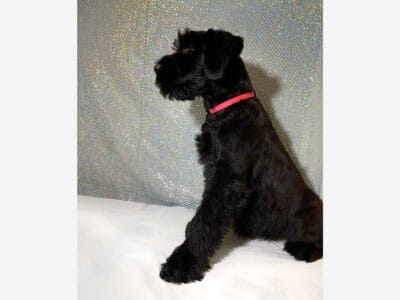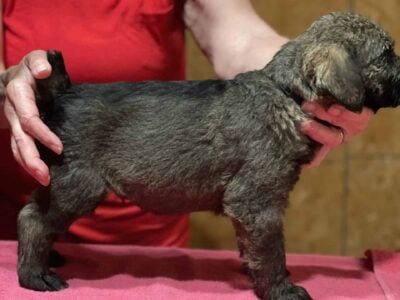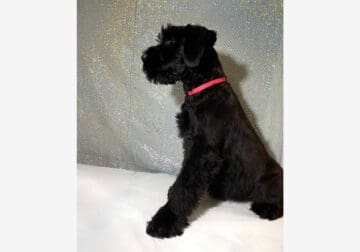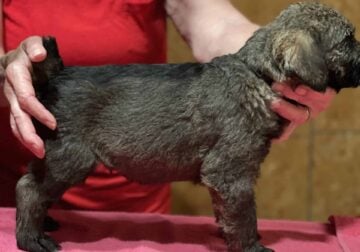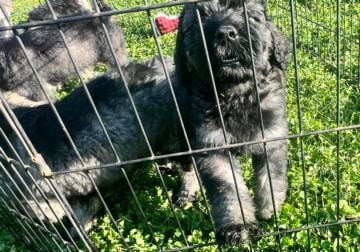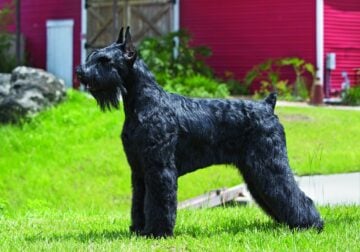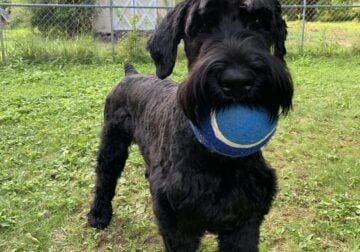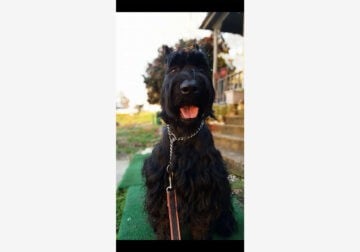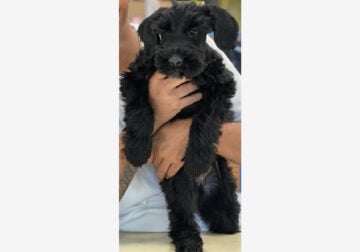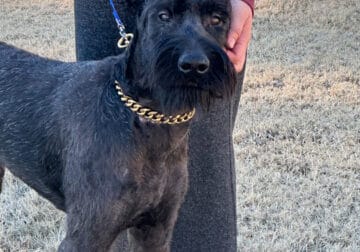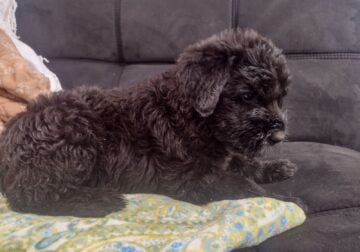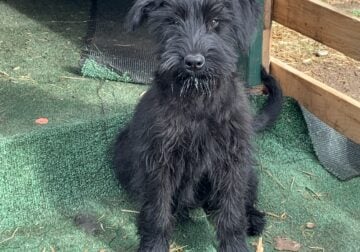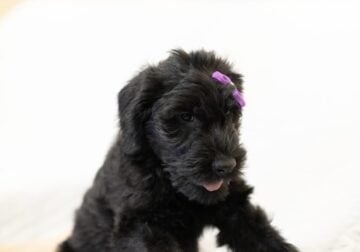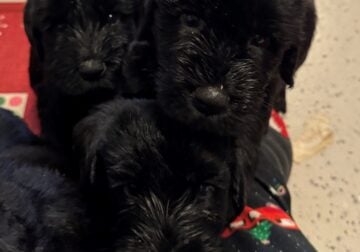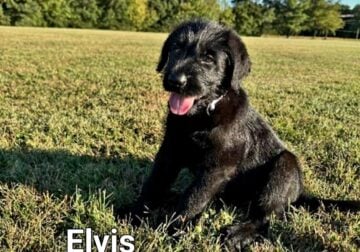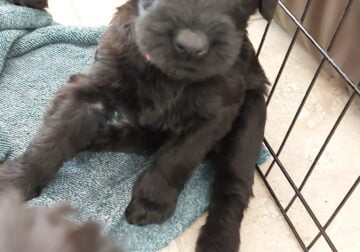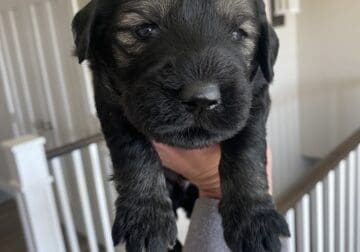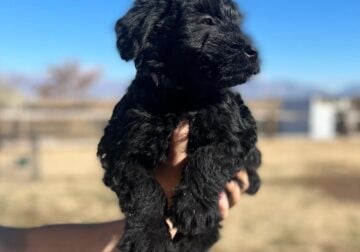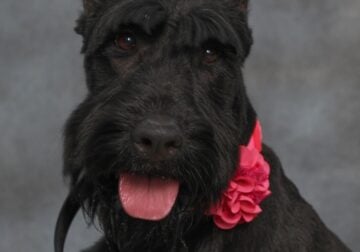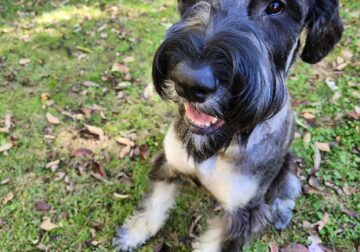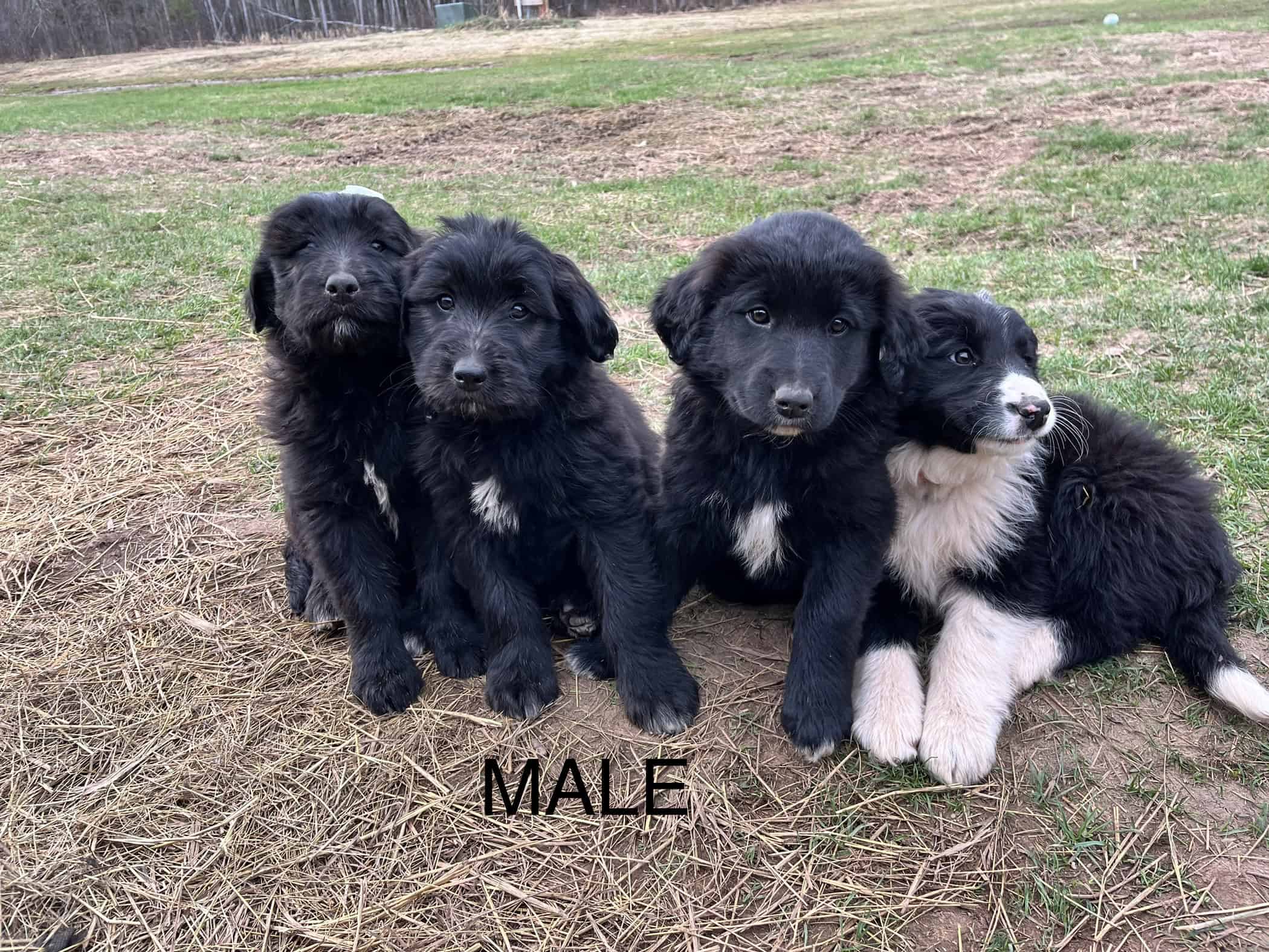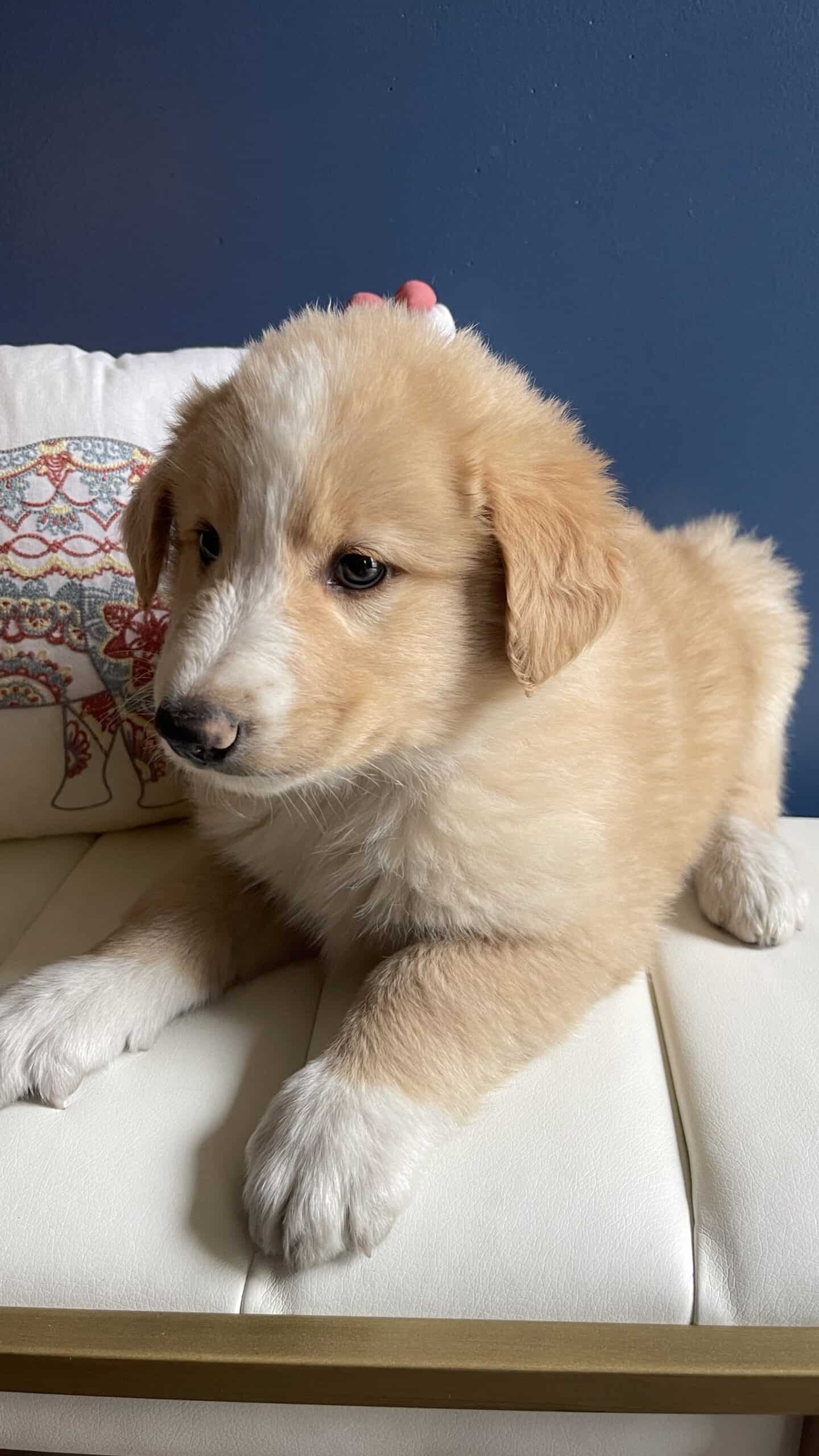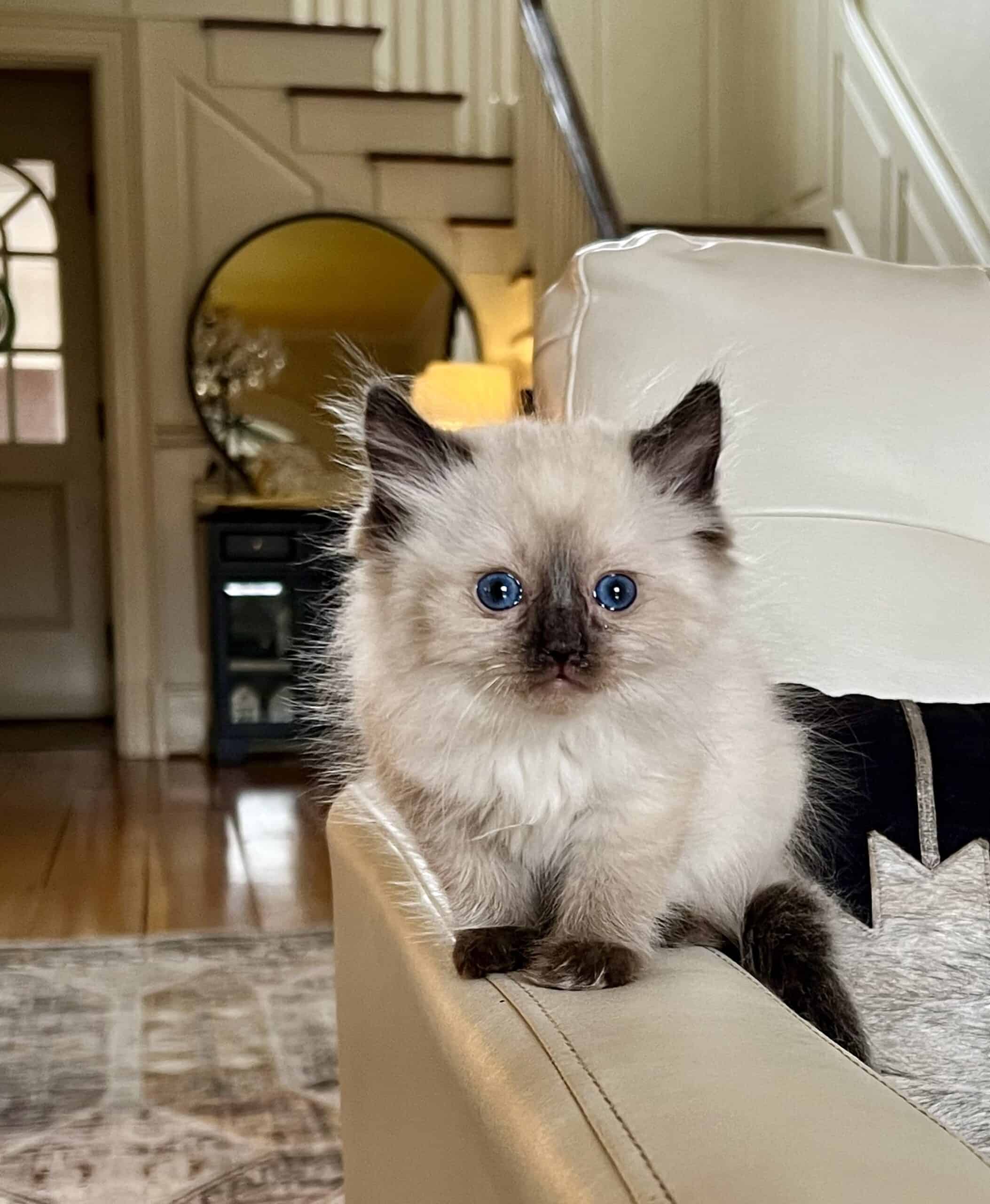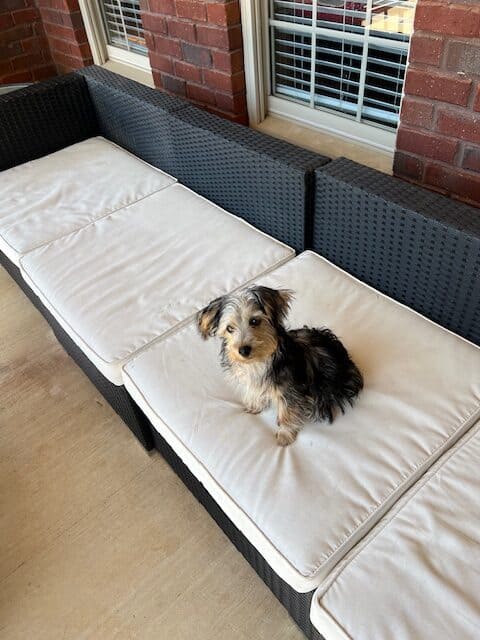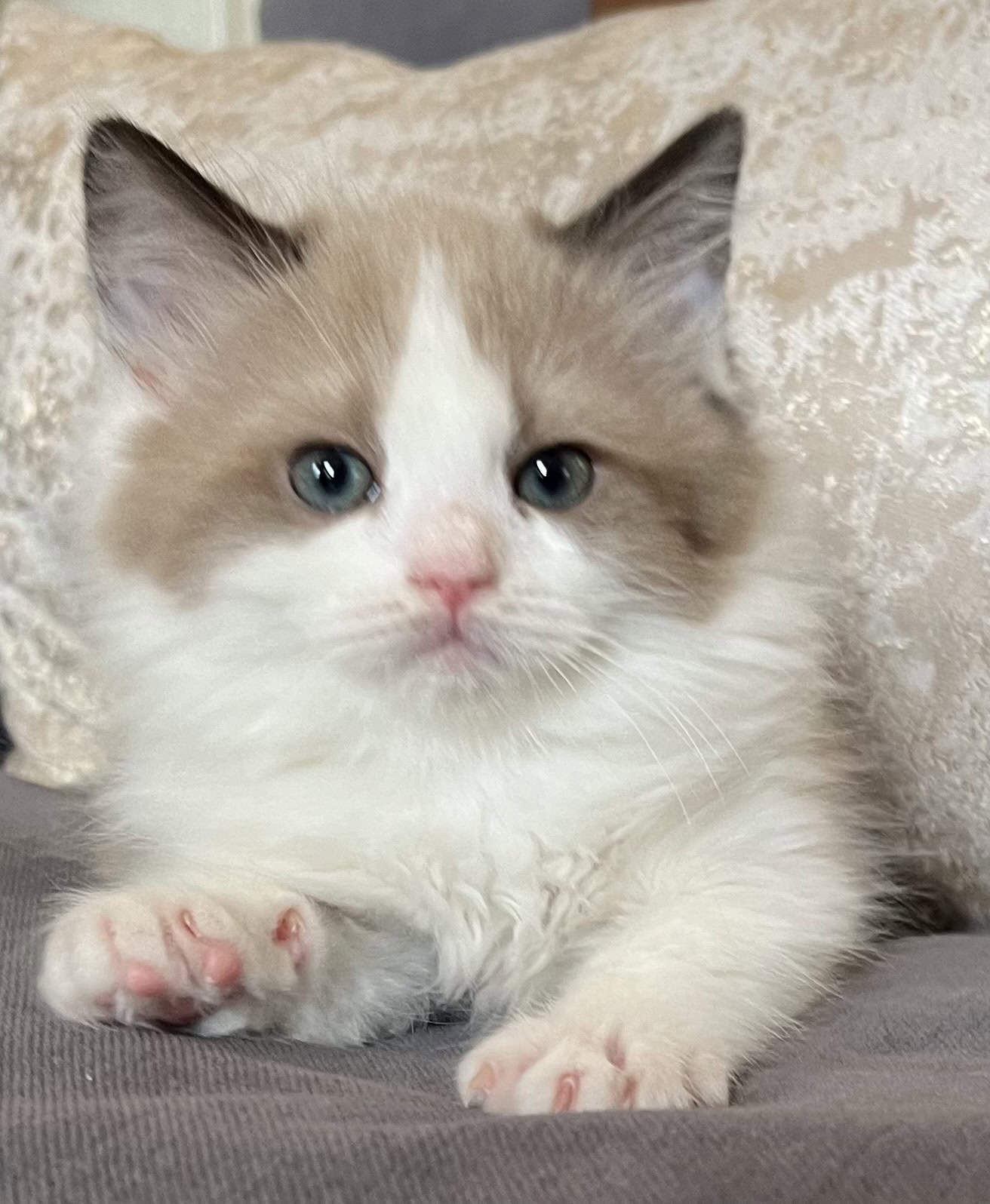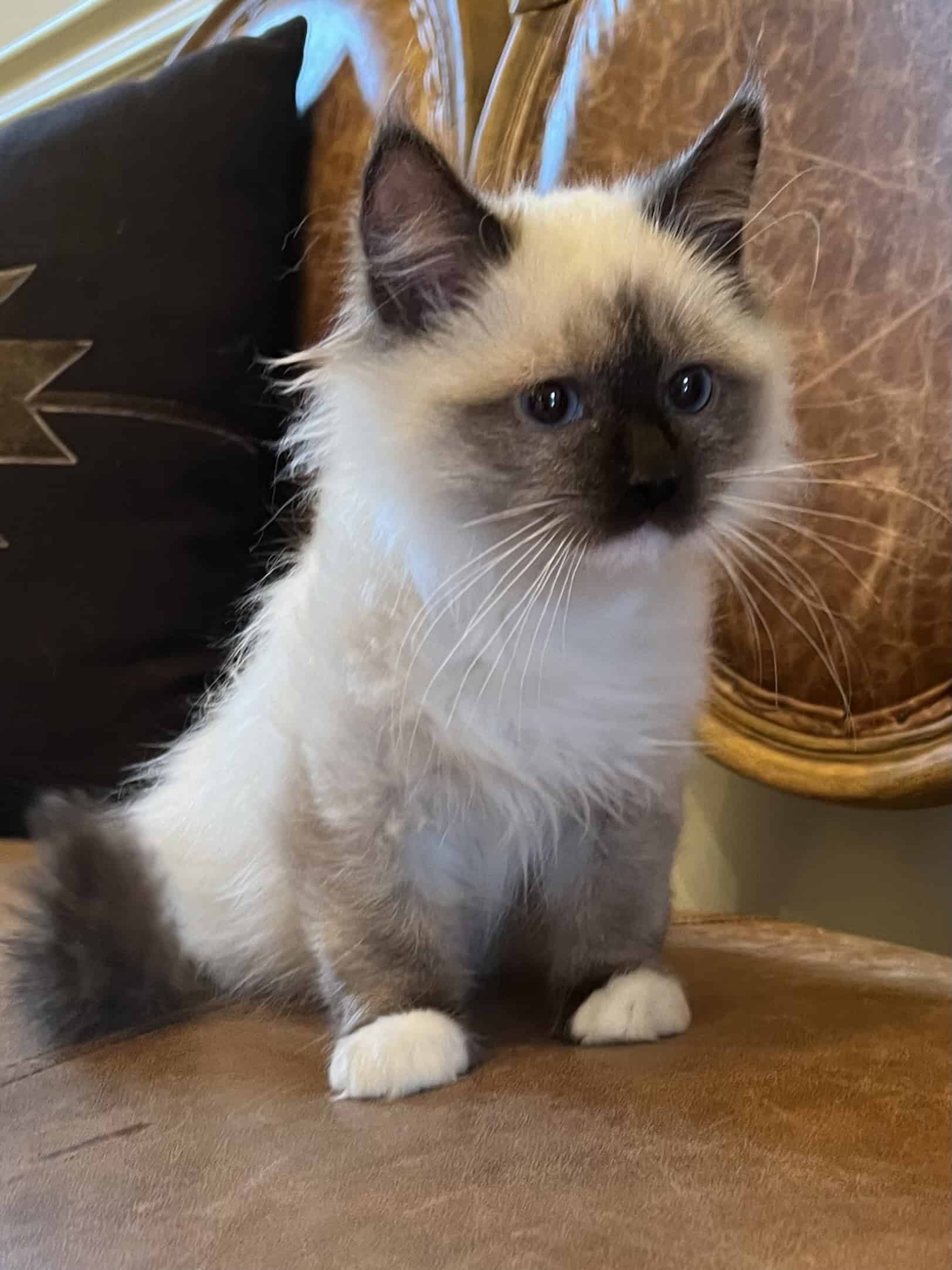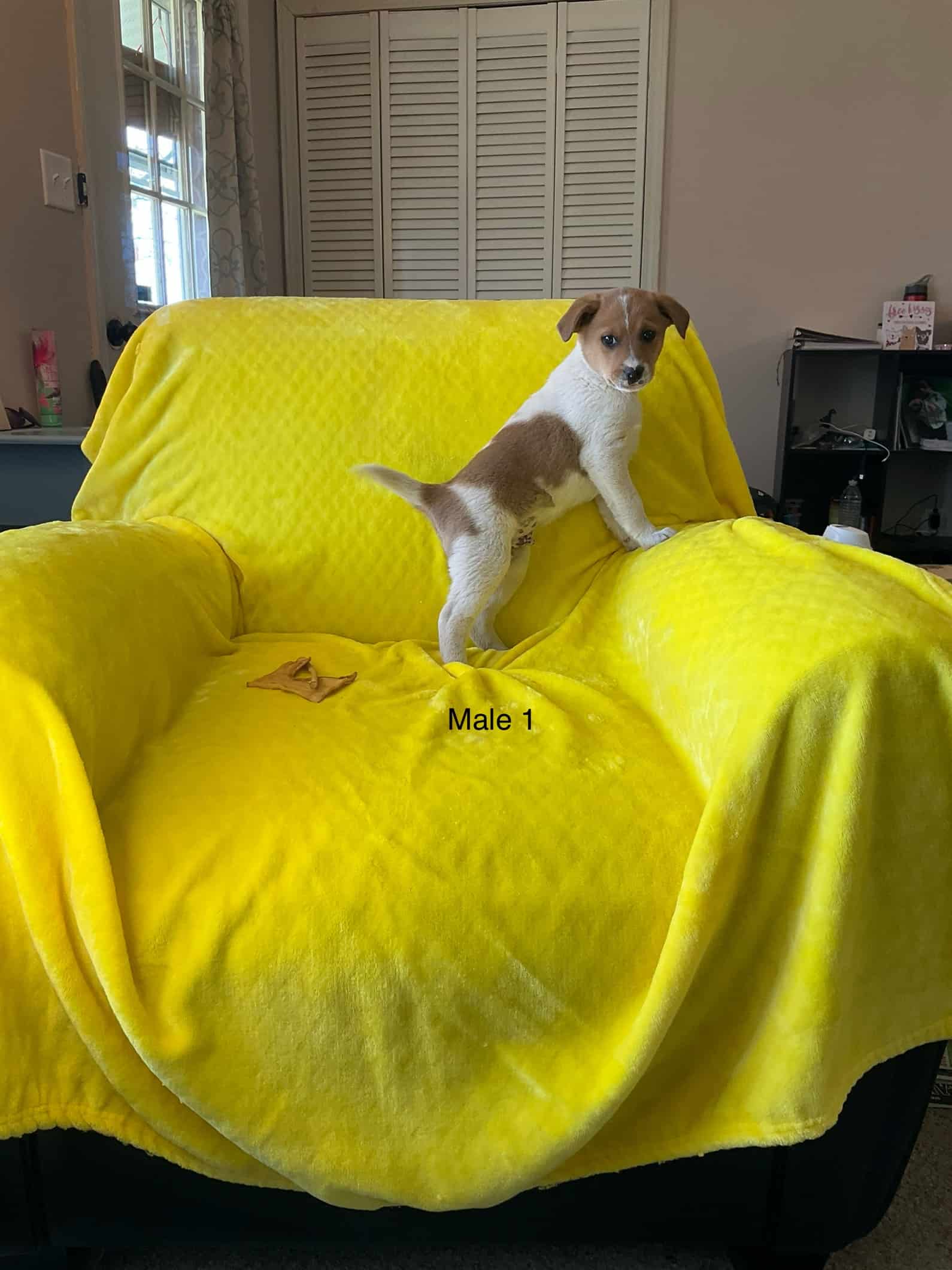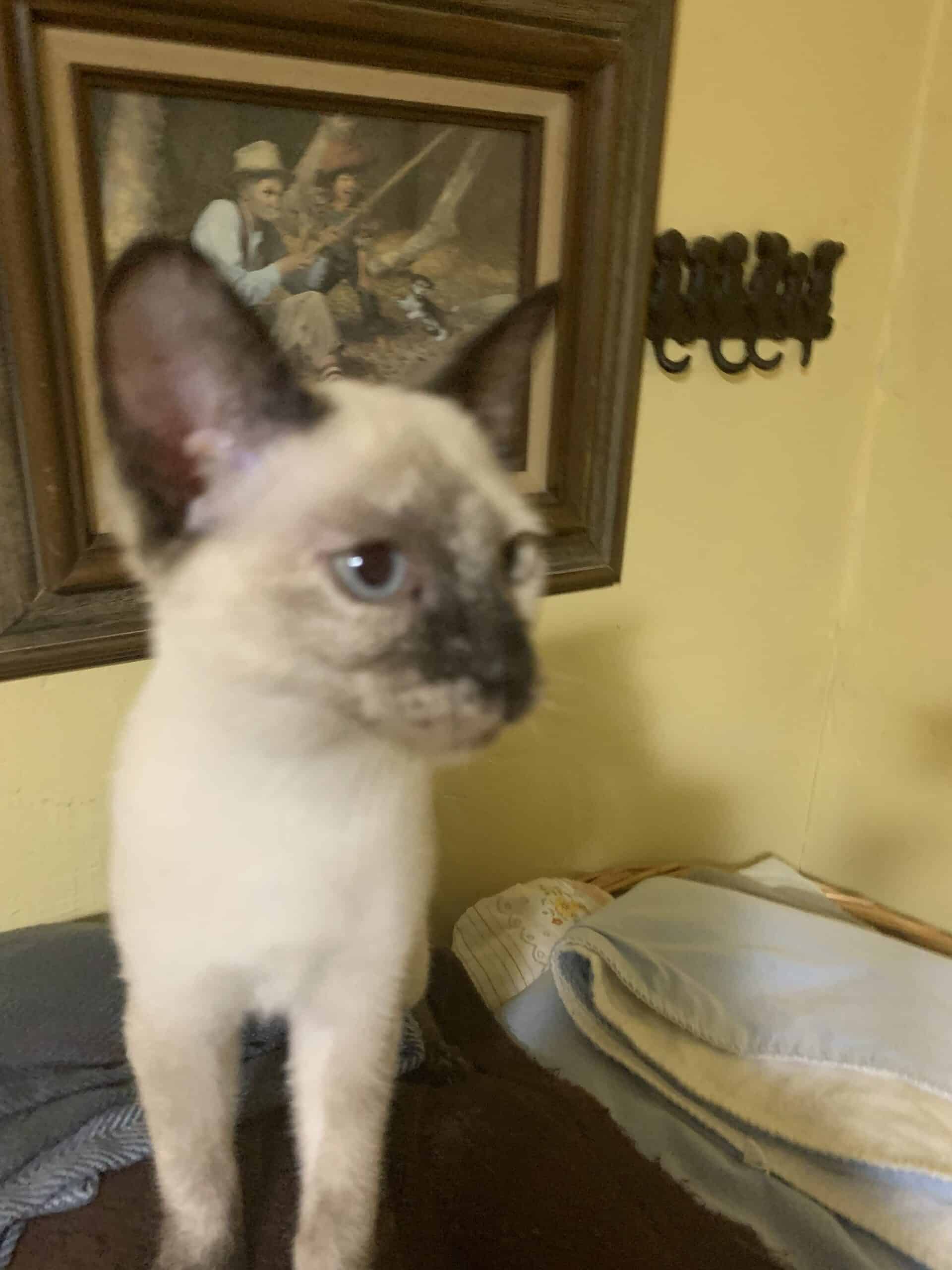Giant Schnauzer Puppies for Sale – For the More Active and Serious Owner
The Giant Schnauzer is the largest of the Schnauzers but is by no means a giant breed. Medium-large in size, the Giant Schnauzer for sale has good drive, quickness, and mobility to be an excellent working dog. The Giant Schnauzer’s talents as a guard and police dog also help it succeed as an active, engaged, and protective family companion. Friendly with other dogs, a well-socialized Giant Schnauzer can be a regular dog park goer or host plenty of canine playdates. Caution is a must around young children and first encounters with unfamiliar people, but the Giant Schnauzer is a great all-around pet for singles or couples who have an interest in sporting or outdoor activities.
Overview of Giant Schnauzer for Sale
Giant Schnauzers have the same general breed expectations as the Standard Schnauzer except for size and a few modifications to the temperament.
Giant Schnauzer Size
Giant Schnauzers are tall, with a shoulder height of 23.5 to 25.5 inches for females and 25.5 to 27.5 inches for males. Females and males have similar weights between 55 and 85 pounds. Females generally weigh slightly less than males.
Appearance and Conformation
Although now classified as a separate breed, the Giant Schnauzer should look like the Standard Schnauzer in a taller and burlier version. These dogs have a square frame, being roughly the same length from the point of the chest to the base of the tail as they are tall from the ground to the height of the withers. The head is an elongated rectangle rather broad between the ears and flat on top. Schnauzers have a slight stop and prominent brows. The eyes are medium, oval, and deep-set, and the ears are carried high with a V shape and a button fold. It is not uncommon for the ears to be cropped, in which case they are narrow, upright, and triangular. The neck is of medium length, strong, and balanced with a well-defined arch. You will notice sloping shoulders and a deep but rather narrow chest with a prominent sternum. There is a noticeable abdominal tuck-up, although not nearly as extreme as a Greyhound. The hindquarters are well-developed and the tail set and carriage are high. Giant Schnauzer puppies for sale will usually have their tails docked in their early days, long before you bring one home. A grown dog’s tail is one and a half to three inches long.
Coat and Colors
The Giant Schnauzer is a double-coated wire-haired breed. Her undercoat is soft and quite dense and the outer guard hairs hard and wiry. The outer fur layer should stand slightly off the body. To finish the coat standard, the Giant Schnauzer has a coarse topknot and requisite eyebrows and beard. Like the Standard Schnauzer, there are two acceptable colors for the Giant.
- Solid black – the only allowable marking is a small white patch on the chest
- Salt and pepper Giant Schnauzer – dogs can have a base of silvery to dark iron with a large scattering of what looks like pepper; the phenomenon is caused by the combination of banded hairs that are black and white and an admixture of black and white hairs that give an illusion of being solid gray from a distance; salt and pepper dogs are a lighter shade of gray on the elbows, cheeks, throat, whiskers, and under the tail, and sometimes the abdomen; you will see peppering on the lighter areas as well
Standard Schnauzer vs Giant Schnauzer
Physical Differences and Similarities
The main difference between the Standard Schnauzer vs Giant Schnauzer is the size. Standard Schnauzers are only 17.5 to 19.5 inches tall and weigh 30 to 50 pounds. Both breeds frequently have cropped ears and docked tails at least in the US. Other features they have in common are the same rectangular blunt wedge head with prominent brows, beard, and mustache, compact body with extremely short-coupled loins, a black or salt and pepper coat, deep-set eyes, and a free and vigorous gait with excellent reach. Both the salt and pepper Giant Schnauzer and Standard Schnauzer should have a black facial mask. The Giant Schnauzer is understandably heavier-set than the Standard Schnauzer, although the latter is a remarkably sturdy dog. Both breeds belong to the AKC working-dog classification. The Giant Schnauzer originated from the Standard Schnauzer among farmhands who felt they needed a larger, stronger, and more intimidating dog to perform such duties as guarding the yard and driving livestock. Its foundation began in the 1600s in Bavaria and possible influencers were the Thuringian Shepherds (the first registered GSD came from these dogs) and the Rottweiler, Doberman, Great Dane, Bouvier de Flanders, Wire-Haired Pinscher, and Boxer. The Giant Schnauzer’s larger size makes it better adapted to cold weather because it loses less body heat, but the Standard Schnauzer does well enough in near-freezing temperatures. Giant Schnauzers are more sensitive to heat and have an increased vulnerability to heat exhaustion than the Standard.
Temperament
Standard Schnauzers are more likely to be escape artists and more prone to wander off. They also have a slightly higher prey drive, but the pups tend to be more trainable than Giant Schnauzer puppies for sale. Giant Schnauzers seem to know their size because they can be pushy and domineering. Training takes many repetitions and a patient demeanor. Both breeds are intelligent but somewhat independent and reserved and aloof with strangers. Viciousness or shyness, as with any working dog, is a serious fault. Giant Schnauzers are guard dogs but should bite only as a last result after discerning an imminent threat. Socialization is what will turn your dog into an excellent judge between friendly visitors, harmless passersby, and people with ill-intent. Growing up, Giant Schnauzers are mouthier than Standard Schnauzers and will remain problem nippers if you do not curtail such behavior early. Giant Schnauzers tend to have too much size and dominance for young children under the age of 10 or 12 years. They also warrant caution around small dogs and may chase unfamiliar cats even if they grow up with one in the household. Instilling social skills early should help any tendencies towards dog aggression as they tend to be friendly to canids that match their size. Same-sex aggression, especially in unneutered males, is of moderate concern.
Personality of Giant Schnauzer in a Nutshell
When you are seriously considering adding a Giant Schnauzer for sale to your family, you can usually depend on the following behavioral traits.
- Alert and watchful
- Playful – good energy for other dogs and older children
- Forceful and serious when working or excited
- Good-natured overall
- Wary of strangers but not hostile until there is a problem
- Intelligent but willful
- Easily trainable for experienced dog handlers
- Bold and courageous
- Loyal
Health of Giant Schnauzer for Sale Near Me
If you do not find a Giant Schnauzer near you, then due diligence becomes even more of your friend. Your goal is to acquire the healthiest dog that you can, so communication with the breeder is key. Also, you will have to try to decipher how reputable a breeder is. Are they recommended by a major registry, and do they adhere to all the health certification requirements? If pups live near you, then visitation is an option you should take advantage of. Assess the care of adults and puppies on the premises and their cleanliness and apparent health. Shelters and rescues cannot always offer the same background or certification on their animals, and their dogs are often mature. However, you can get an excellent analysis of the temperament of your potential new dog.
Caring for the Giant Schnauzer
You will find that caring for your Giant Schnauzer is easy once you commit to training, socializing, and exercising her.
- Love – Giant Schnauzers are loyal and affectionate but do fine on their own if alone periods are not prolonged beyond six to eight hours at a stretch; independent but ideally should have a job to occupy them
- Exercise – 60 to 90 minutes daily, 20 to 40 minutes of which should be vigorous
- Excel at competitive or partner-based activities – these can serve as a “job” as they involve training and a lot of practice and activity; Schnauzers are excellent at Shutzhund, obedience, tracking, police work, search and rescue, agility, and can even be trained to herd (can try herding trials)
- Coat grooming – wire-haired breed, so ideally you would brush gently twice a week and hand strip dead wiry hairs monthly; many owners give their Schnauzers a body clip (shave that leaves the coat a set uniform length but much shorter than original) and leave the head neatly trimmed
- Food – premium diets can vary from homemade cooked to raw or be comprised of wet cans, dry kibble, or commercial fresh
- Calories – 1500 to 1700 calories per day for adults, 3000 to 5000 calories for puppies during rapid growth, and 2000 to 4800 calories or more for working dogs
- Trim nails every 4 to 8 weeks
- Bathe and clean ears every 6 to 12 weeks
- Swab excess wax in ears every 2 weeks or as needed
- Wipe the face and check ears every other day or more; brushing the teeth can be on the same schedule
